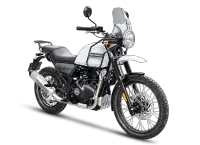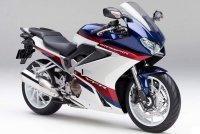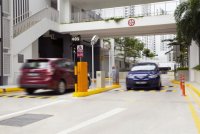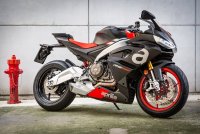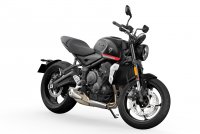.thumb.jpg.942d9c8d2090d78b3319f3cc3d3744e6.jpg)

With the wet weather comes a whole host of issues, problems, and safety concerns that us as bikers need to be aware of. Gone are the days of riding in the dry, trusting the grip levels of your brand new Pirelli tyres, and leaning the motorcycle into the corner to take that perfect apex. And it is not just our own machines that we need to worry about, as the rainy season also increases the risk of motorist in other vehicles being unable to see us bikers resulting in an accident.
Our good friends over at Budget Direct Insurance - whom have been supporting SBF for many years, have put together a fantastic list of tips, tricks, and points to look out for from them resident experts on motorcycling. We think that this is a very important list, more now than ever as safety is paramount and it is our job to make sure we are safe for our friends and family.
From Budget Direct Insurance:
Staying safe on your motorcycle in Singapore is always a challenge. And wet roads pose challenges of their own. Here’s what to watch out for:
Braking
A modern motorcycle (particularly one equipped with ABS - or anti-lock braking system) can stop in a shorter distance than a car on a dry road, but it still takes a lot of rider skill to do so. Once the road is wet, the motorcyclist’s braking distance increases even more drastically. The rule-of-thumb for car drivers is to leave a two-second gap to the vehicle in front in the dry, and four seconds in the wet. Motorcyclists should err on the side of even more caution in both cases. Remember: slower speeds mean drastically reduced braking distances. Also remember: unless you’re lucky enough to have ABS, you need to moderate the pressure on the brake levers to reduce the chances of skidding – jamming the brakes on suddenly is likely to lead to a fall.
Accelerating
A lighter touch is required with the throttle hand on a wet road as well. In a straight line, most motorcyclists can cope with a little wheelspin by backing off the throttle. If you’re too aggressive getting on the throttle when the bike is leaned over in a corner, there is a very good chance you will end up on the tarmac. Rolling the throttle on gently is the safest way.
Cornering
On dry roads bikes can be leaned over through corners much, much more than riders think. On wet roads this is less true, and it takes a very brave rider to try to find those limits. The key – even for highly-skilled riders – is smooth inputs. If you get on the throttle too suddenly, you’re likely to lose grip at the rear wheel. If you change direction too suddenly, you’re likely to lose grip at the front – and almost no rider has the skill to stop that being a crash.
Lane placement and road conditions
Your position in the lane makes a difference for two important safety reasons – visibility and grip. You should ride in the right-hand wheel tracks of the lane, even in the dry, because it places you in the best position to be seen by drivers. The wheel tracks tend to be cleaner than, say, the centre of the lane, which collects dust and grit as well as any oil leaks from passing traffic. Counterintuitively, light rain can make the surface more slippery than heavy rain, because it brings that oil to the surface and doesn’t wash it away – so the centre is likely to be even more slippery in those conditions. Be aware of any paint on the surface as well – it may offer less grip.
Visibility
Unfortunately, the old “I didn’t see you” excuse is applied all too frequently when car drivers fail to give way to motorcyclists. Doing everything you can to ensure you can be seen is important, particularly if visibility is reduced in heavy downpours. Making eye contact with drivers around you is one way to know you’ve been seen. High visibility clothing may also improve your odds.
Equipment
Decent waterproof riding gear with crash protection is a purchase you will never regret. Likewise, a good-quality helmet, which should provide enough ventilation to keep the visor clear. I cannot stress the importance of quality tyres enough. You need all the grip you can get, and cheap tyres are a recipe for disaster.
Other dangers
The perfectly fog-proof visor is yet to be invented, so be aware that your ability to see what’s going on around you is also diminished. Very heavy rain also reduces your forward vision (and seems to result in more rear-end crashes) – exercise your judgement and pull well off the road into a safe spot if the you feel the traffic is too close in those circumstances. Watch for telltale rainbow-hued slicks on the road surfaces – oil or diesel spills are like ice, and require yet more caution. Be aware that our tropical trees often topple over in intense squalls – if conditions are very windy, you’re probably better off stopping in a safe spot until it passes.
What do you think of the list above? Have we missed out any points that would make riding in the rain safety for fellow bikers? Share your thoughts, comments, and experiences in the comments section below so we can all keep each other safe on the roads!
- Read more...
-
- 0 comments
- 852 views
.png.f357c4bbda45b8d1f0301390a48a7ff4.png)


